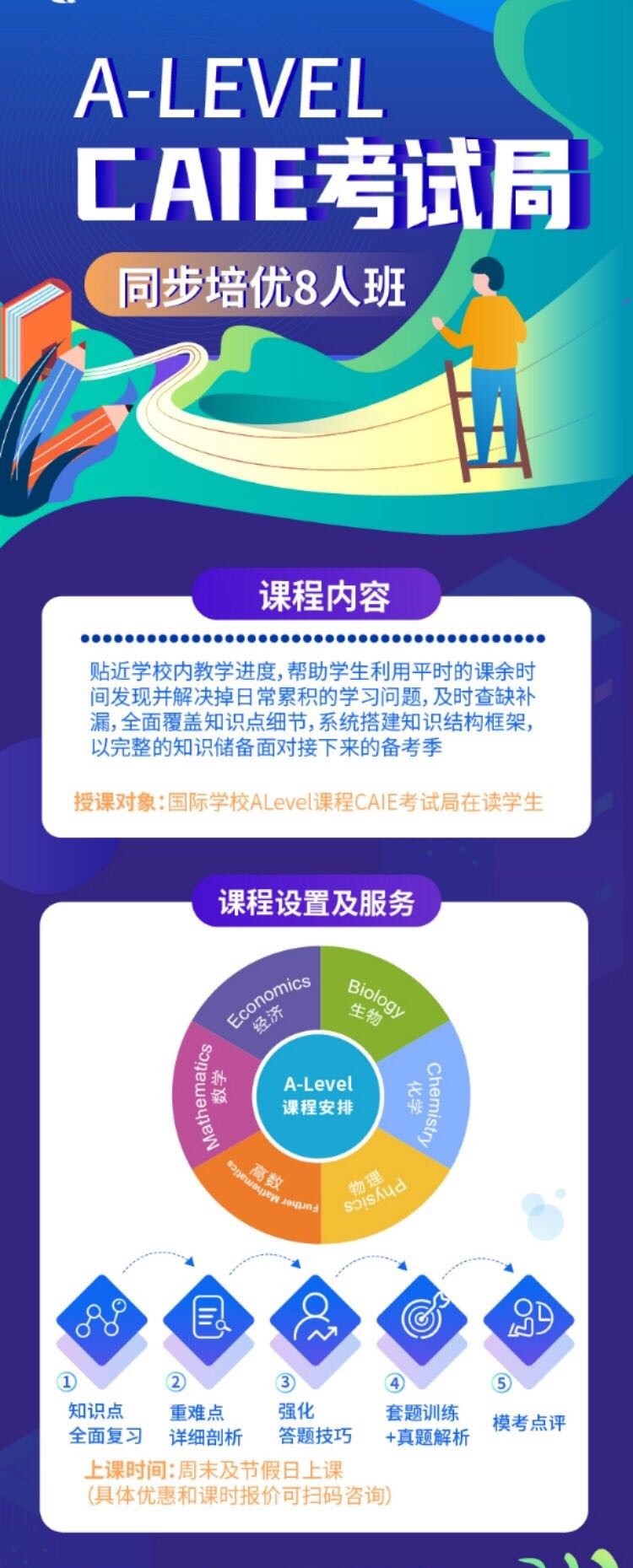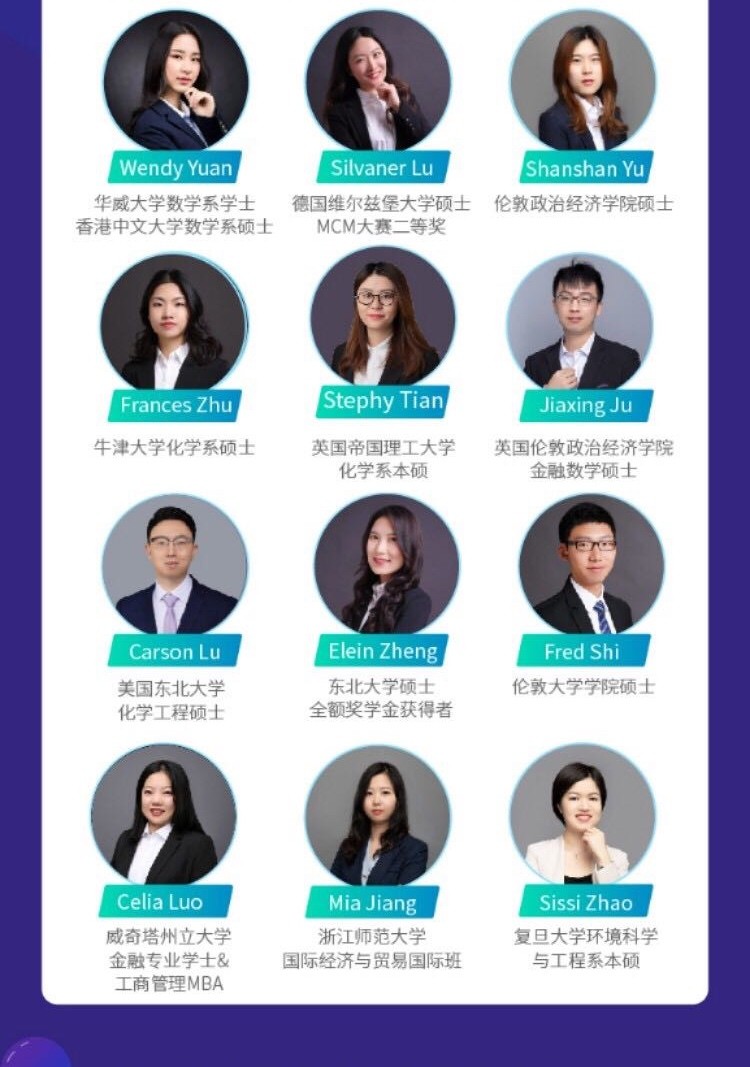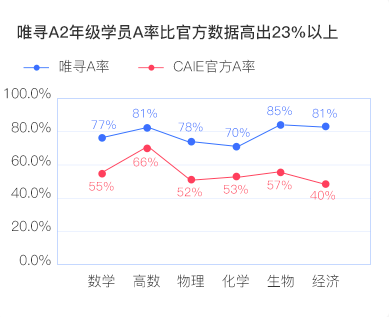
大部分AS年级的学员,都会觉得单元的AS物理知识点特别好学,但碰到有波、光电效应、光的波粒二象性等知识点的后续单元时就面露难色。所以我们今天带大家从头厘清这些难点的基本概念和定义。只要概念基础打得牢,考试碰到再新奇的题目也不用害怕了。

AS(ALEVEL第一年)的时候物理需要考Paper1、2、3。Paper 1是选择题,Paper2是大题,Paper 3是实验题。相对来说,paper2的AS物理知识点比较困难,因为题目的灵活性比较强,而且需要背的定义概念比较多。
Measurement:
Random errors are errorsof measurements in which the measured quantities differ from the mean valuewith different magnitudes and directions.
Systematic errors are errors of measurements in which the measured quantitiesare displaced from the true value by fixed magnitude and in the same direction.
Accuracy is ameasure of how close the results of an experiment agree with the true value.
Precision is ameasure of how close the results of an experiment agree with each other
Kinematics:
Speed is the rate of change of distance traveled with respect to time.
Velocity is the rate of change of its displacement with respect to time.Acceleration of an object is the rate of change of its velocity with respect to time.
Forces And Dynamics:
Normal contact force is aforce perpendicular to the surface experienced by a body when it is in physicalcontact with something else.
Hooke’s Law states that within the limit of proportionality, the extension produced in a material is directly proportional to the load applied.
The principle of moments states that,when an object is in equilibrium, the sum of anticlockwise moments about any point equals the sum of clockwise moments about the same point.
The moment of a force is the product of the force and the perpendicular distance between the axis of rotation and the line of action of the force.A couple is a pair of forces, equal in magnitude but opposite in direction, whose lines of motion do not coincide.
Centre of gravity is the point on an object through which the entire weight ofthe object may be considered to act.
Stability ofan object refers to its ability to return to its original position after it hasbeen displaced from that position.
Pressure is force acting per unit area.
Upthrust/buoyancy force is an upward force on a body produced by the surroundingfluid (i.e., a liquid or a gas) in which it is fully or partially immersed, dueto the pressure difference of the fluid between the top and bottom of theobject.
Archimedes’Principle states that the upthrust experienced by an object partiallyor entirely immersed in a fluid is equal to the weight of the fluid displacedby the object.
Newton’s first law of motion states that a body will continue in its state of rest oruniform motion in a straight line unless an external resultant force acts onit.
Newton’s second law states that the rate of change of momentum of a body is proportional to the resultant force acting on it and the change takes place inthe direction of the force.
Newton’s third law states that: If body A exerts a force on body B, then body Bexerts a force of equal magnitude but in the opposite direction on body A.
The principle of conservation of momentum statesthat the total momentum of a system of objects remains constant provided noresultant external force acts on the
system.

Work, Energy And Power:
Work is the mechanicaltransfer of energy to a system or from a system by an external force on it.
Heat isthe non-mechanical transfer of energy from the environment to the system or fromthe system to the environment because of a temperature difference between thetwo.
The principle of conservation of energy states that energy cannot be created nor destroyed in any process.
Gravitational Potential Energy is defined as the amount of work done in order to raise thebody to the height h from a reference level.
Power is defined as the rate of work done or energy converted with respect to time.
Waves:
Displacement is thedistance moved by the particle from its equilibrium position.
The amplitude of a wave is the maximumdisplacement of the particle from its equilibrium position.
The wavelength is the distance between2 successive points on a wave which are in phase with one another.The period is the time taken for aparticle on the wave to complete one oscillation.
The frequency of a wave is the numberof complete oscillations that pass through a given point in 1 second. (Units:Hertz(Hz) or s-1)
A compression is a region whereparticles are close to one another. (High pressure)
A rarefaction is a region where theparticles are further apart. (Low pressure)
Phase Difference (φ) between two particles or two waves tells us how much a particle (or wave) is in front or behind another particle (or wave).
Intensity of awave is the rate of transfer of energy per unit area perpendicular to thedirection of travel of the wave.
Superposition:
Diffraction refers to thebending or spreading out of waves when they travel through a small opening orwhen they pass round a small obstacle.
The Principle Of Superposition states that when two waves of the same kind meet at a point in space, the resultant displacement at that point is the vector sum of the displacements that the two waves would separately produce at that point.
Interference refersto the superposing of two or more coherent waves to produce regions of maximaand minima in space, according to the principle of superposition.
Gravitation:
Newton’s Law Of Universal Gravitation statesthat every particle in the Universe attracts every other particle with a forcethat is directly proportional to the product of their masses and inverselyproportional to the square of the distance between them.
Gravitational field strength at a point is defined as the gravitational force per unit mass acting on a mass placed at that point.
Gravitational potential energy, U of a point mass m, in a gravitational field, is the work doneby an external force in bringing that point mass from infinity to that point.Gravitational potential at a point in a gravitational field is the work done perunit mass, by an external force, in bringing the mass from infinity to thatpoint.
Escape speed is the minimum speed with which a mass should be projectedfrom the Earth’s surface in order to escape Earth’s gravitation field.
Current Of Electricity:
Electric Current is the rate of flow of chargethrough a particular cross sectional area with respectto time.
The potential difference between twopoints in an electrical circuit is the electrical energy converted into otherforms of energy per unit charge passing from one point to the other.
One volt is the potential difference between two points in anelectrical circuit when one joule of electrical energy is converted to otherform of energy as one coulomb of charge passes from one point to the other.
Ohm’s Law states that the ratio of the potential difference across aconductor to the current flowing through it, is a constant, provided that itsphysical conditions, such as temperature, remain constant.

The electromotive force ($\epsilon$)of a source is the energy converted from other forms to electrical per unitcharge delivered round a complete circuit.
Internal resistance (r) of any real source is the resistance that charge movingthrough the material of the source encounters.
DC Circuits:
Kirchhoff’s First Law statesthat the total current entering a junction is equal to the total currentleaving the junction. OR The algebraic sum of currents at a junction is zero.
Kirchhoff’second law states that the net electromotive force around a closedcircuit loop is equal to the sum of potential drops around the loop. OR Thealgebraic sum of the changes in potential encountered in a complete traversalof a closed circuit loop must be zero.
Alternating Current:
The root-mean-square (r.m.s.) value of analternating current is equivalent to the steady direct currentthat converts electrical energy to other forms of energy at the same averagerate as the alternating current in a given resistance.
Rectification isthe process in which an alternating current is forced to only flow in onedirection.
Semiconductors:
Band gap is the energy difference between top of valence band andbottom of conduction band. It is also a range of energy in a solid where noelectron states exist.
An intrinsic semiconductor is a puresemiconductor crystal containing only one element or one compound.
Extrinsicsemiconductors doped with donor impurities are called n-type semiconductors because theydonate an excess of negative charge carriers.
Quantum Physics & Lasers:
Photoelectric Effect is the emission of electrons from metal by electromagnetic radiation.
Photoelectron is used to indicate that the electron has been emitted when light falls on the surface of a metal.
The work function of a material is defined as the minimum amount of the work necessary to remove a free electron from the surface of the material.
Threshold frequency is the minimum frequency of an incident radiation required to just remove an electron from the surface of a metal.
The scanning tunnelling microsope (STM)is a non-optical microscope which uses the concept of quantum tunnelling byelectrons to study surfaces of conductors or semi-conducors at the atomic scaleof about 2 Å or 0.2 nm.
本文对AS物理知识点的整理就到这里,大家也可以在学习新章节之前拿出来预习一下。
虽然各地陆续官宣了明年的大考时间,但2021ALEVEL考试的未知因素依然很多,所以不论你是身在国内还是已经在英国读私校都要有危机意识。
首先,要慢慢开始制定复习计划,争取让自己的成绩大考时往上冲一个等级。其次,平时要多用功,保持良好的学习记录,获得优异的师评成绩、预估成绩、排名格外重要。因为一旦今年的极端情况再度发生,以上因素就会决定你申请时递交的成绩。如果你觉得多线作战很难,点击预约试听【唯寻ALEVEL同步培训班】——
唯寻教学天团授课
根据不同学校进度定制课程
主动介入式管理
弥补以往学习过程中的遗漏点
在提供行之有效的复习方案同时
培养学员世界知名大学要求的学习力




更多ALEVEL学习攻略点击

学习有方法,成长看得见
筑梦牛剑/G5/常春藤
